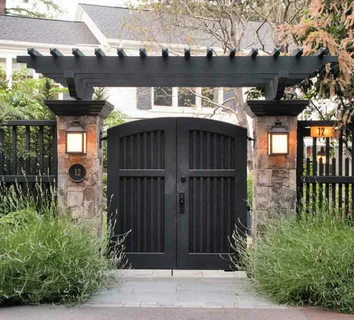When planning to install a new fence or upgrade an existing one, many homeowners focus on the fence panels or materials without giving much thought to the fence posts. However, selecting the right fence post is just as important—if not more so—when it comes to durability, stability, and the overall look of your fence. Here’s a guide on how to choose the right fence post for your yard.
Understanding the Role of Fence Posts
Fence posts are the backbone of any fence structure. They support the panels or wires, keep the fence standing tall, and help it withstand environmental stress like wind, rain, and shifting soil. Choosing the wrong type of post can lead to a weak fence that may tilt, sag, or even collapse over time.
Types of Fence Posts
When figuring out how to choose the right fence post for your yard, start by understanding the common types of fence posts available:
1. Wood Fence Posts
Wooden posts are traditional and blend well with natural landscapes. They’re typically used for privacy or picket fences. Cedar and pressure-treated pine are popular choices due to their resistance to rot and insects.
2. Metal Fence Posts
These posts are highly durable and require minimal maintenance. They are often used for chain-link or wire fences and are a good choice for areas with extreme weather conditions.
3. Vinyl and Composite Posts
Vinyl posts offer a clean, modern look and are often used with vinyl panel fencing. They are weather-resistant and long-lasting but can be more expensive than other options.
4. Concrete Fence Posts
Best for high-security or permanent fencing, concrete posts are extremely strong and durable. However, they are heavy, expensive, and harder to install.
Key Factors to Consider
To truly understand how to choose the right fence post for your yard, you need to evaluate a few critical factors:
Soil Conditions
Sandy or loose soil might require longer or thicker posts, or even concrete footings, to ensure stability. Clay soils can retain water, so choosing a rot-resistant material is essential.
Climate and Weather
In areas with frequent rainfall or snow, opt for posts that are resistant to moisture, such as pressure-treated wood or vinyl. For windy areas, stronger posts like metal or concrete are ideal.
Purpose of the Fence
Whether you’re installing a decorative picket fence, a privacy fence, or a security barrier, the function will influence your post choice. For example, a privacy fence may require taller and thicker posts to support heavier panels.
Aesthetics
Your fence should complement your home and landscaping. Wooden and vinyl posts offer a wide range of design options, while metal provides a more industrial or modern look.
Installation Tips
Once you know how to choose the right fence post for your yard, proper installation is key. Make sure posts are set deep enough (typically one-third of the post’s length) and are anchored with concrete for added stability. Always use a level and double-check spacing between posts to ensure uniformity.
Final Thoughts
Learning how to choose the right fence post for your yard can save you time, money, and future repairs. By considering material, climate, soil conditions, and aesthetic preferences, you’ll be well on your way to building a fence that not only looks great but stands the test of time.

